There are quite a few areas to visit in Portugal, but none are as magical as Porto and the Northern part of Portugal since it is not only port, wine and song you will discover, but also a culture that thrives on happy people and a sense of history. After all, this area of the country is rich with UNESCO World Heritage Sites from the historical City of Porto to the equally historical city of Guimaraes to the Foz Coa Art Valley and the much-loved Douro Valley.
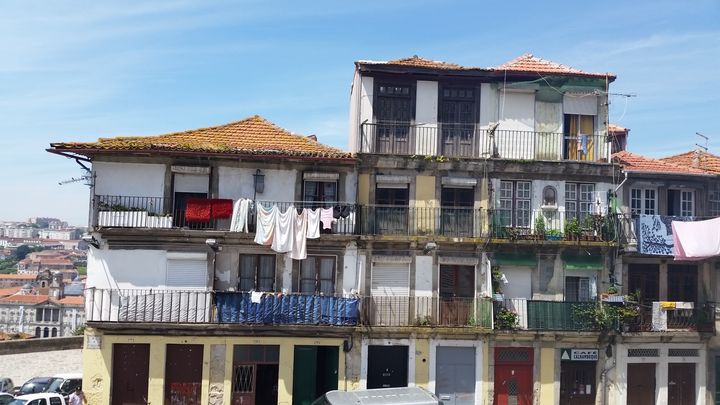
Charming in its history and culture #porto
The old streets in many of the towns in this part of the county shimmer with history that dates thousands of years and the gastronomy in the region is as rich as the wine and port served alongside.
Arriving in Porto there are a few musts as you get started. Cierigos Tower and the LELLO Book Shop are recommended. In fact, the book shop is considered one of the most beautiful in the world and is UNESCO World Heritage (also inspiring J.K. Rowling in her Harry Potter series).
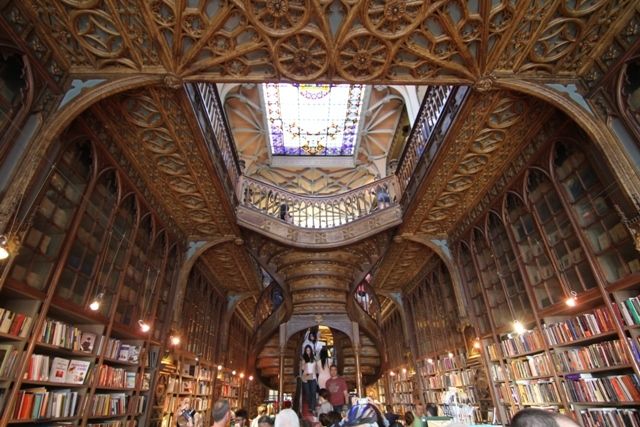
The inspiring bookshop
In the new part of the city there is the Candido dos Reis and Galeria de Paris for trendy nightlife and design cafés and clubs.
During the day there are many options of things to do, but one must is a Douro River Cruise. On the riverbanks you will see a bustling world around you from fishermen to small cafes enticing with the local cuisine or the historic bridges, which make the city unique. The Luiz I Bridge was even designed by an Eiffel student.
The Contemporary Art Museum in Porto is a feast for the senses with immaculate gardens and the Serralves Villa on the property, which is an Art Deco Mansion. The museum was designed by the Portuguese architect Alvaro Siza Vieira and is considered one of the most relevant in the contemporary art circuit on the continent.
I, of course stopped in at the Ramos Pinto Port Wine Cellars and Museum, which was founded by Adriano Ramos Pinto in 1890. These wines are a reference to the quality of the wine in Portugal. The museum on site will take you through a collection of unique objects in the recently opened Museum area – Casa Ramos Pinto.

Savor the port and the wine in Portugal
The Douro Valley
It’s the region that is likely the catalyst for why you have come to this part of Portugal and its UNESCO World Heritage designation allows for the Douro Valley to be the oldest demarcated wine regions where Porto and Douro wines are produced.
The river Douro flows from the border of Spain to the east of Porto. Visitors on the river might also have a chance to see not only the wine harvest depending on the time of year, but also cherry blossoms and luscious almonds trees.

Miles and miles of vineyard
Don’t miss Quinta do Panascal dating back to the 18th century and one of the most important wine estates in the region. This place has bottles of highly recommended wine with an A classification and, in fact the wine at Quinta do Panascal has been classified by some as one of the best wines in the world.
Area side trips
Outside of Porto a few side trips I undertook included a stop at the City Centre in Gulmaraes in the Minho region. The city is called the cradle of Portugal because it is the birthplace of the country’s first king and it was the first capital of the newly established Portugal kingdom.
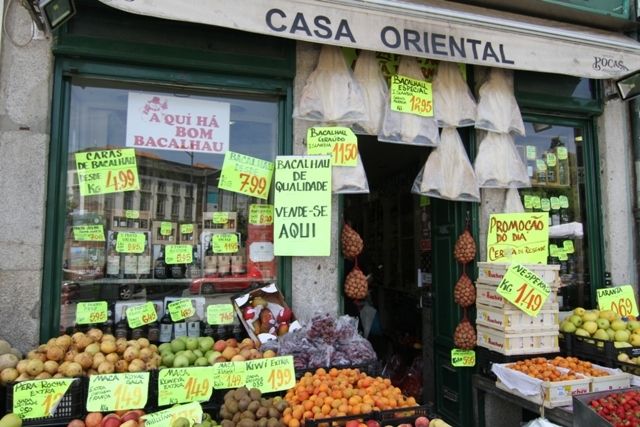
So local
Ponte de Lima is on the southern bank of the Lima River and is one of the oldest towns in Portugal founded in 1125. For folks who are familiar with the Road to Santiago de Compostela this town played a part in the route and was significant as a Roman settlement.
While visiting the outskirts of Porto stop in at Quinta do Ameal in the Vinho Verde region, which has been around since 1710. It is home to some excellent wines made from a Portuguese grape called Loureiro.
Old and new, classic and modern the Porto and northern part of Portugal offers a stunning look at an atmosphere that is welcoming and traditional and best shared with a glass of local wine in hand and a smile to embrace a culture that is warm and inviting.
For more information visit http://visitportoandnorth.travel/
Eat and Drink:
Discover Restaurant Vinum and Graham’s Port Wine Cellars and suddenly you find yourself in the midst of 3,200 oak barrels where Porto fine wines of Graham’s are aged. The main dining room here is located in a 19th century wine cellar all of it dating back to 1890. Don’t miss the glass walls, which will give you a glimpse of the thousands of seasoned oak casks with some of the world’s most valuable port wines inside.
DOP Restaurant in Porto opened in 2010 by Rui Paula is located in a building dating back to the 14th century in the city centre. The menu thrives on traditional Portuguese flavors and Paula is well known for creating excellent samplings with a distinct local air.
D. Tonho is located in the city center in Porto in the medieval city wall and it is a great place to enjoy traditional regional dishes from a vantage that allows you to see the Douro River while sipping the local wine and port. Absorb the atmosphere for lunch here and take in the joy of the moment that only good views and good wine can create.
The Yeatman Hotel is a member of the Relais and Chateaux brand, but while the accommodations stand out, even more does the one Michelin-starred restaurant. Chef Ricardo Costa continually breathes fresh life into his flamboyant cuisine aimed to please the most discerning palate. The Yeatman’s one starred chef finds a contemporary take on the traditional flavors of the Portuguese menu amidst a property atmosphere set in a lush garden overlooking the Douro River and Porto.
Dinner at Hotel Teatro’s Palco Restaurant thrives on the history of the city of Porto and its stunning heritage. The hotel actually arose from where the Baquet Theatre was inaugurated in 1859 and guests can don themselves in old theatre clothes and take a tour in this very Bohemian environment. Stop in at the bar for a local wine before heading into the restaurant where once again the flavors and dishes are exquisite. I dined on a starter of red mullet with cream, paired with a Douro Carolima 2013 followed by suckling pig belly with kidney bean stew and carrots. This course was served with a Douro Valley red from 2012. Also housing a hotel there are 78 rooms and suites colored in gold and bronze in keeping with the spirit of the place.
Os Lusiadas is a traditional restaurant in Porto that specializes in seafood and located next to one of the major national fishing ports. The name of the restaurant was inspired by the masterpiece of Luis de Camoes, a national poet who wrote the poem in the 1500s describing Vasco de Gama’s discovery of the sea route to India.
Lunch in the Douro region couldn’t be more well-appointed than at the Quinta Nova de Nossa Senhora do Carmo, a luxury winery house opened in 2005. It was originally and old 18th century manor house in the heart of the area’s nature and tradition. While the food here is again, beyond measure, the 11 rooms where guests can spend a holiday includes walking routes, wine activities, `and panoramic views of the nearby vineyards. The restaurant invites guests to discover the local culinary delights in combination with the very local wines.
Carmo’s Boutique Hotel is a Small Luxury Hotel of the World with a cozy feel and 15 rooms located in the Portuguese countryside. I had a nice lunch onsite situated with great views since the area where Carmo’s Hotel is located in Ponte de Lima is near the oldest town in Portugal and in the heart of Porto and Minho Region.
Where to Stay:
Bessa Hotel is located in the Boavista area of Porto and is the perfect starting point for a city walk down narrow streets and alleys to discover the landmarks that dot the city.
What to know about Port Wine
Color, nose and taste are the keys to tasting wine. Here is a look at the different port options and how to discern each one from the white port to the tawny port to the very exclusive ruby port options.
The white port is made from white grapes kept in wood casks where it ages for three years. There are three types of white port; dry, medium dry and sweet.
Tawny port is made from red grapes in wooden casks that mellow to a golden brown color. This is a blend that uses a variety of wine that has aged for different lengths of time in various casks. The age average is three, 10, 20 or 30 years with the specific age designated on the label. Pairings for tawny port range from an aperitif to a meat dish.
The ruby port is made with red grapes harvested from a single year and bottled two years after the vintage. It is aged in bottles where it can be kept for several decades.
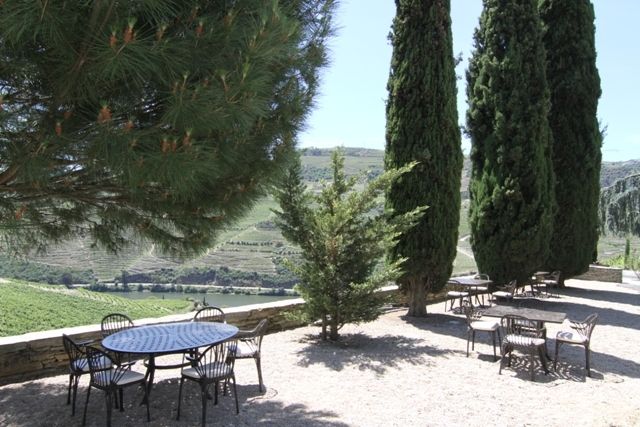
The drinks on me
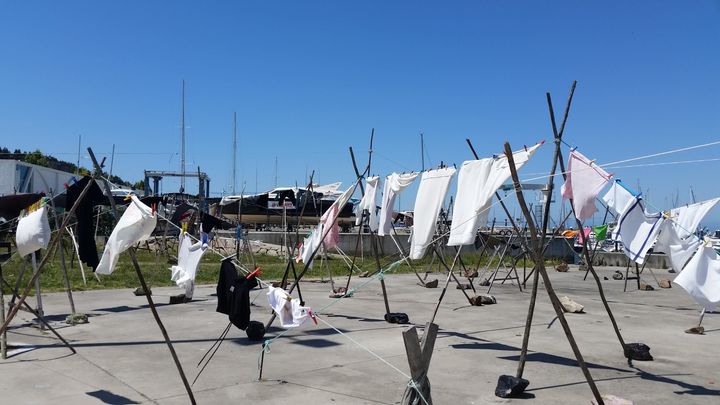
Scenes from a northern Portugal town
For more travel or auto tips follow Rita @RitaCook13 or on Instagram at RitaCook13.
To hear more about Rita’s travels listen to her every Saturday night on WTIM radio at 7 p.m. CST or visit http://theinsidermag.com for archived episodes.
This writer has no financial stake or professional relationship with any brands - auto or travel destinations - that she writes about and the opinions in all articles are solely my own as are the photos/video.
